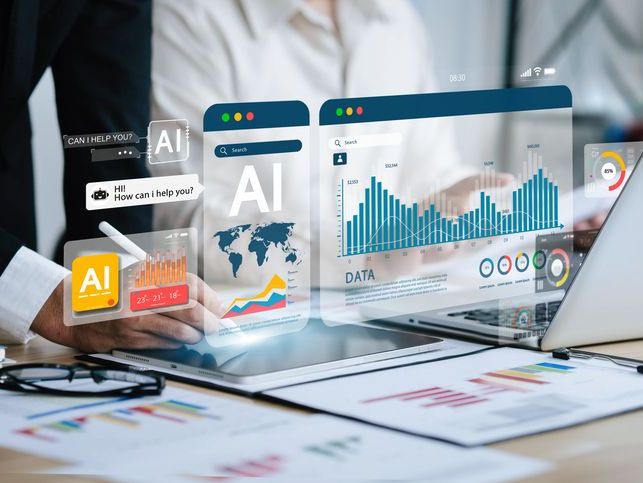Picture this: Your employees are missing deadlines and drowning in email threads. When it comes to improving team productivity, you’re at a loss. But then suddenly, they manage to cut turnaround times by a whopping 40%.
That’s the power of productivity software.
From real-time collaboration tools to time tracking apps, today’s technology has the power to transform workflows and fuel efficiency like never before. And with workforce analytics software like ActivTrak, it’s easy to identify the ideal apps for your teams.
Ready to learn more? Keep reading for a primer on the latest productivity apps — and how to make the most of them.
What is productivity software?
Productivity software is a wide range of applications designed to help employees work more efficiently. It includes everything from word processors like Google Docs and Microsoft Office to workforce management tools like ActivTrak — applications designed to streamline workflows, save time and keep teams connected. Many now incorporate advanced features like artificial intelligence and automation, allowing workers to not only complete tasks faster but also make more decisions with data.
While productivity software isn’t new, its importance has soared along with hybrid and remote work. These tools make it easy to work from anywhere by opening the door to communication and collaboration. Across industries, teams integrate productivity technology into everyday work to fuel smarter and more efficient ways of working.
4 types of productivity software
The software market boasts a wide variety of productivity apps designed to meet different business needs. For most organizations, the most important ones fall into the following four categories.
1. Office suites
This category includes a range of apps for conducting everyday tasks. Word processing, spreadsheet and presentation software all fall into this group, as do file sharing tools and graphics software.
2. Database management systems
This type of productivity software allows organizations to securely store, organize and share large volumes of business data. It includes a variety of tools, from customer relationship management (CRM) platforms to SQL databases.
3. Time management software
Time tracking tools help employees and managers ensure the right amount of time goes to work that drives results. These apps automatically log work activities to generate reports showing how many hours go to different tasks. Teams use them to understand productivity patterns and make adjustments as needed.
4. Project management software
Project management apps allow teams to assign tasks, set deadlines, track progress and align activities — all in one platform. They serve as the foundation to keep projects flowing, particularly in remote settings where most collaboration is digital.
Key features to look for in productivity software
Want to make sure you choose the right productivity software? Here are some of the most important features to look for:
- A user-friendly interface: Less isn’t always more, especially when it comes to selecting apps employees actually use. Go for a simple design over complex features.
- Collaboration capabilities: Look for applications that allow multiple users to work together in real-time — commenting, version histories, and shared access are crucial for teams working on joint projects.
- Analytics and reporting capabilities: These allow team members to track performance, optimize workflows and identify areas for improvement or access insights quickly.
- Native integrations: The easier it is to integrate your office productivity software with other tools you use daily, the more value you’ll get out of them.
- Customizations: Customizable templates are especially important for creating spreadsheets and presentations, and personalized dashboards are key for time tracking and database management software.
Benefits of using productivity software
From boosting employee engagement to lowering labor costs, productivity software offers a range of benefits. For example, many business leaders invest in apps specifically to:
1. Prevent burnout
Burnout and disengagement cost companies thousands of dollars per employee. Productivity software helps keep it at bay by streamlining workflows and speeding up common tasks. This is especially true if you use tools to automate repetitive work and free employees to focus on more meaningful projects.
2. Boost efficiency
One of the most immediate benefits of productivity software? Improved efficiency. From spreadsheet software that automates calculations to project management tools that streamline communication, the advantages are far-reaching. These applications allow teams to focus on more critical aspects of work.
3. Improve collaboration
How much more would your company achieve with cross-departmental collaboration? According to recent research, the answer is “a lot.” Alignment between sales and marketing alone boosts revenue by more than 200% — making collaboration tools essential. Productivity software allows teams to stay on track regardless of locations or work hours. This leads to better teamwork and a more cohesive work environment.
4. Reduce time cost
Did you know organizations lose an astounding $1.7 million for every 100 employees — just to wasted time? Or that less than 60% work hours actually go to productive activities? Productivity software offers various tools to help users prioritize tasks, manage deadlines and track progress. These features not only help employees allocate their time more effectively, but also reduce operational costs.
5. Increase agility
Productivity software helps teams work faster, collaborate better and make more informed decisions. Together, these advantages add up to greater operational agility, allowing you to react quickly to changing market conditions and customer demands.
Signs you need productivity software
Recognizing the need for productivity software can be a game-changer for both individuals and teams. Here are some signs it might be time to invest in more of these tools:
- Employees are consistently overwhelmed: If team members show signs of overwhelm, it’s likely time for productivity software to help break down tasks into manageable steps and easy-to-follow priorities.
- Missed deadlines: Consistently missing deadlines indicate a lack of effective time management, indicating you need time tracking software to help team members complete tasks on time.
- Collaboration breakdowns: If frequent miscommunication causes misunderstandings and delays, it’s time to bridge those gaps with collaboration tools.
- You lack visibility into team capacity: Not sure who’s working on what? Project management software is a game changer. Better yet, invest in productivity software designed to help you find and fix unbalanced workloads.
Choosing the best productivity software for your team
With so many options available, selecting the right productivity software can be daunting. Follow these steps to select the best tools for your team.
1. Identify your needs
Before diving into the selection process, it’s essential to identify specific needs. Are you looking for a tool to manage personal tasks, or do you need something that facilitates team collaboration? Understanding the primary purpose will help narrow down options.
2. Evaluate features
Don’t just dive right in — take time to check out review sites like G2, and evaluate which functionalities your employees truly need. For instance, if collaboration is a priority, look for software that offers real-time editing and communication features.
3. Consider your budget
While some productivity software is free, most come with a subscription fee to unlock important features. Weigh costs against long-term potential value. Many applications offer free trials, allowing you to test the software before committing financially.
Unlock your team’s potential with ActivTrak’s productivity software insights
Ready to transform how your team works? The right productivity software makes all the difference — streamline workflows, cut through email chaos and help employees focus on work that drives results.
But here’s the challenge many managers face: How do you know which tools your team actually needs?
That’s where ActivTrak comes in. Our workforce analytics software shows you exactly which applications your employees use most and which productivity tools deliver real results. Instead of guessing which software to invest in, concrete data shows:
- Which tools employees actually use
- Where workflow bottlenecks occur
- How to balance workloads more effectively
- What specific productivity gaps need addressing
Ready to see the difference? Start your free trial to get started today and request a demo for a walkthrough of key productivity reports.





